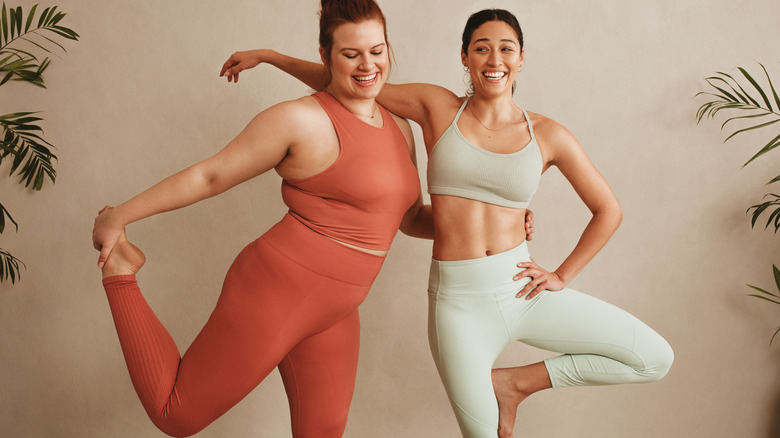The Exercise That Can Help Reduce The Risk Of Blood Clots
Blood clots can be life-threatening if they go without treatment or are severe. So it's essential to know how to prevent them with exercise and understand your risks. According to Healthline, a blood clot in one of your major veins is called deep vein thrombosis or DVT. It commonly occurs in your legs but can show up anywhere in your body. If you have DVT, there is a worry that it will move to your lungs, which is called a pulmonary embolism or PE. The CDC states that 60,000 to 100,000 people die every year from a DVT or PE.
Risk factors for blood clots are traveling, sitting for four or more hours, bed rest, obesity, a family history of blood clots, smoking, being over 65, pregnancy, a sedentary lifestyle, certain birth control pills, and cancer. Symptoms of blood clots are swelling, pain, tenderness, discoloration, a warm feeling, chest pain, shortness of breath, feeling lightheaded, a severe headache that comes on suddenly, problems with vision, trouble speaking, fast heart rate, problems breathing, and coughing up blood. If you have these symptoms, call 911 or go to the emergency room immediately.
What can you do to prevent blood clots? Exercise is a significant factor. Here's what to do.
Exercises to reduce blood clot risk
Everyday Health recommends several movements to help prevent blood clots. The first one is walking. If you're on a road trip, stop when you can to get out of the vehicle to walk and stretch. If you're on an airplane, get up and stretch when you can. Just walking to the bathroom can help. WebMD recommends a beginner walking routine — walking for 5 minutes 3 to 4 times a day the first week, 20 minutes 3 times daily the second week, 30 minutes 2 times daily the third week, and then 40 minutes daily.
Chair exercises can help, especially if you have to sit for work. Exercise your feet by putting your feet flat on the floor and pointing your toes to raise your heels, and then raising the top end of your feet, so your heel is touching the floor. Try ankle circles where you lift your feet off the floor and make a circle with your feet. Pretend you're drawing a circle with your toes. Seated leg raises help too. With feet flat on the floor, raise one leg so it's straight and lower it. Switch legs. Keep your blood circulating in your upper body with shoulder rolls. Raise your shoulders and move them in a circular motion. Do these exercises 5 times each every 30 minutes or 10 times each if you're at high risk for blood clots.


